Got a new TV for entertaining during the holidays? Is it a lot bigger than your last TV? Before you dive into all the fun stuff, you need to consider a very important question: Where are you going to put it?
Whether you wall-mount or use a TV stand, there are some important, and often unintuitive, aspects to consider. For instance, did you know that bad TV placement can reduce a TV’s apparent picture quality, cause neck pain and more? You definitely don’t want to mount your TV too high, too far away or at a weird angle.
Issues created by bad TV placement might not be apparent right away, but over weeks and months they could be noticeable, annoying and possibly even painful. The time gap could be enough that you might not even realize it’s the TV’s placement causing the issues.
Is this hyperbole? Not really. Consider that the Occupational Safety and Health Administration has standards in how your work environment is setup to minimize the chance of repetitive stress injuries. If you’re watching four to six hours of TV at night, it’s possible you could be susceptible to many of the same issues. Also, most TVs look far worse “off axis,” as in too far above, below or to the side of the center of the screen. So all that money you spent on a new TV could be wasted by not looking at it from the angle it looks best.
Mounting a TV above a fireplace is also a bad idea, as is the bathroom. A slight seating shuffle, or adjusting your preferred pedestal placements, could yield better picture quality or allow for a larger TV. So before you mount a TV or buy an expensive TV stand, consider these dos and don’ts for TV placement.
Do these five things before you set up a new TV
Do check TV height
While there’s no set height for TV placement, ideally you don’t want the TV to be too high. Staring up at a TV is like sitting in the front row of a movie theater. It’s not ideal, not comfortable and not conducive to long viewing sessions. Generally speaking, you want the center of the TV to be about eye level, or even slightly lower. This is true whether you’re mounting the TV or putting it on a stand.
For more on this, check out my guide on how high you should put your TV.
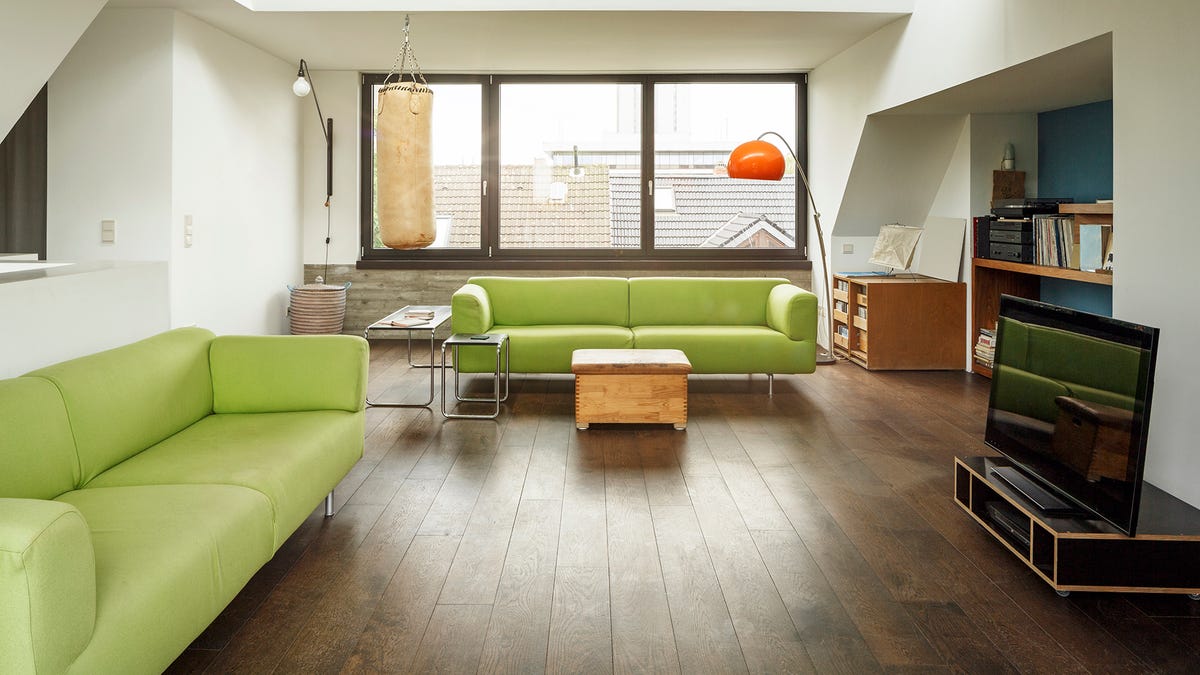
Nice couches make a pretty good TV placement look even better.
Do check the distance from your couch to your TV
It’s unlikely anyone reading this is going to be sitting too close to their TV. Sitting closer to your TV has two benefits: It fills more of your field of view (so it’s more immersive), and you can see more resolution (the image is more detailed). If you can’t or don’t want to sit closer, you can alternatively get a larger TV. Check out this article on how big a TV you should buy for more info.
Do look out for sources of TV glare
Room lighting and reflections are the No. 1 killer of TV images according to a study I just made up. The fact is nearly every modern TV has a reflective screen, and I don’t care how awesome your lamps are, they’re not as interesting as what’s on TV. Sure, you can just turn off the lights (or close the blinds), but sometimes that’s not easy or possible. If it isn’t, check out our piece on how to rid your HDTV of reflections.
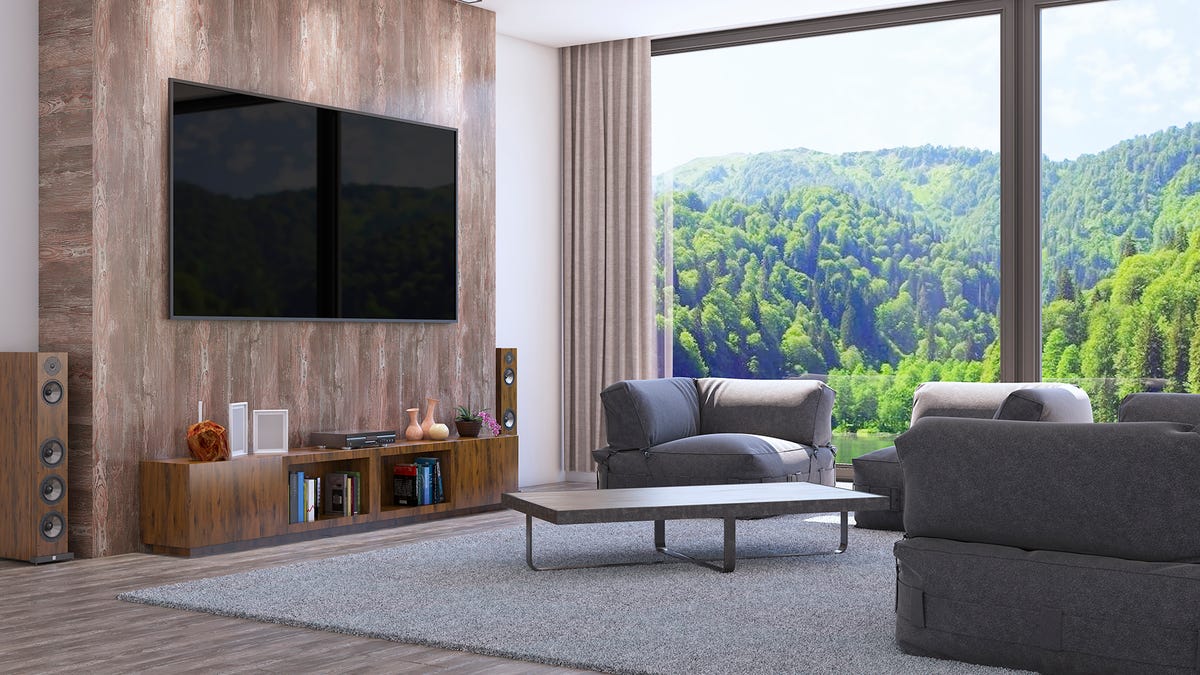
It’s nice when your view can outdo your TV.
If you’re thinking of wall mounting, keep in mind all the Do’s mentioned so far. Plus, if you’re thinking of getting an LCD, make sure you get a wall mount that’s able to pivot or adjust. With few exceptions, LCDs have worse performance if you’re not sitting directly in front of them. Being able to pivot or move a wall-mounted TV so it’s aimed directly at your eyeballs will be a huge improvement in picture quality (compared to the same TV not aimed at you). It’s worth mentioning at this point that TV weight is not a limiting factor when it comes to mounting.
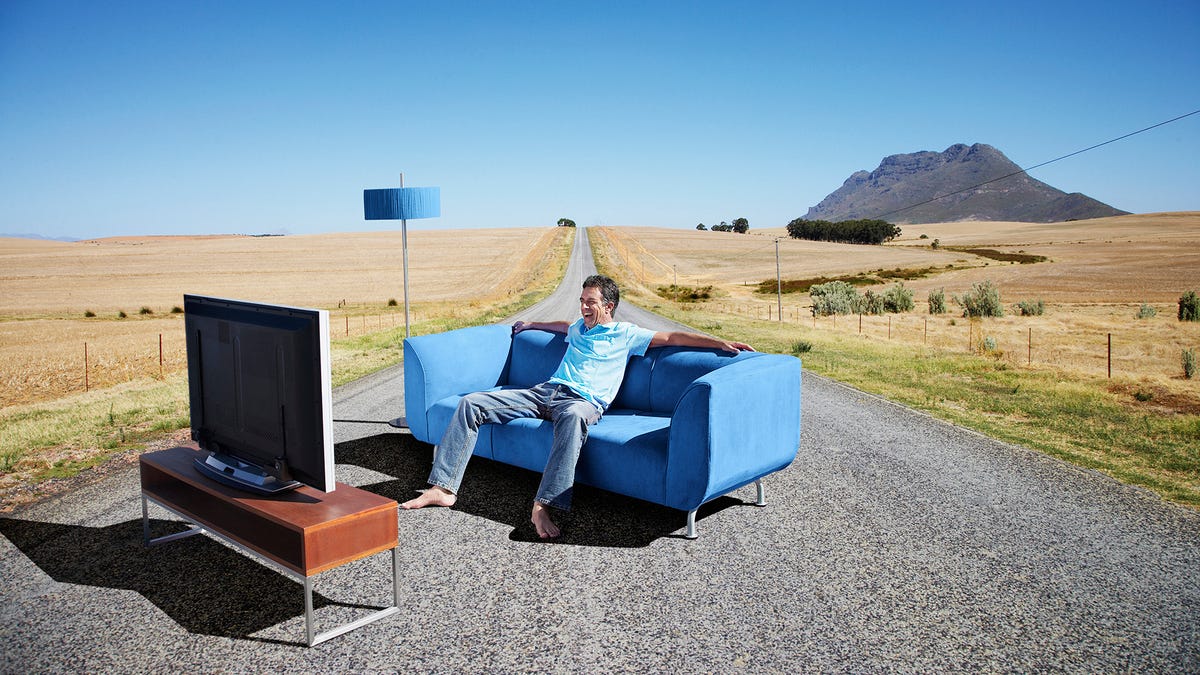
Always consider glare.
Do consider more than style
When it comes to TV stands, there are countless options. Consider the TV height in addition to whatever style you like. Most stands are fairly uniform in height, and a few inches above or below ideal isn’t going to matter, but a large TV on a tall stand isn’t a great idea.
Do consider safety, especially if you have young kids
Turns out that falling TVs injure a lot of kids every year. Find out how to keep your TV from falling over if you’ve got kids or lively pets.
Don’t make these seven common TV placement mistakes
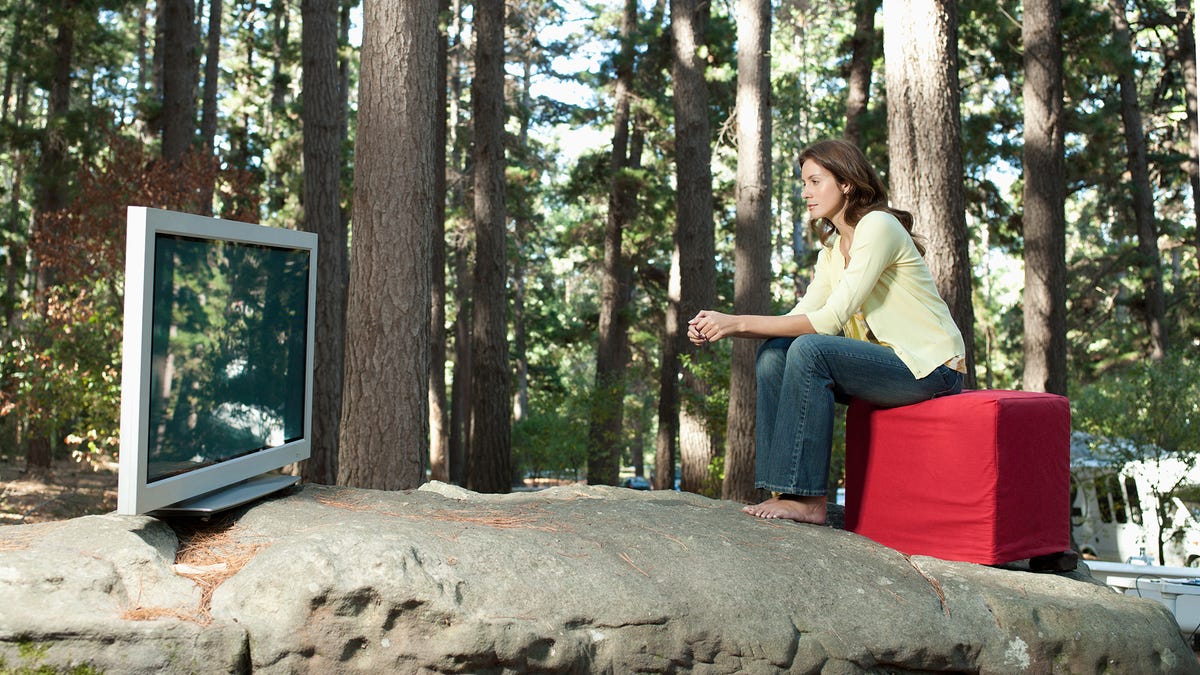
Reflections might be a problem here.
Don’t mount your TV too high
A TV at the correct height is going to look really low when you’re standing. Which is fine, since most of the time you won’t be standing when you’re watching it. Mounting a TV too high can literally be a pain in the neck. If you want a good laugh, there’s a lively subreddit devoted to pictures of people who have mounted their TVs too high.
Don’t mount a TV above the fireplace
Seriously. Don’t mount a TV above a fireplace. For the above reason and more — not the least of which is that heat is the enemy of all electronics. Even if you never use your fireplace, mounting a TV above it is almost always too high to watch from a couch.
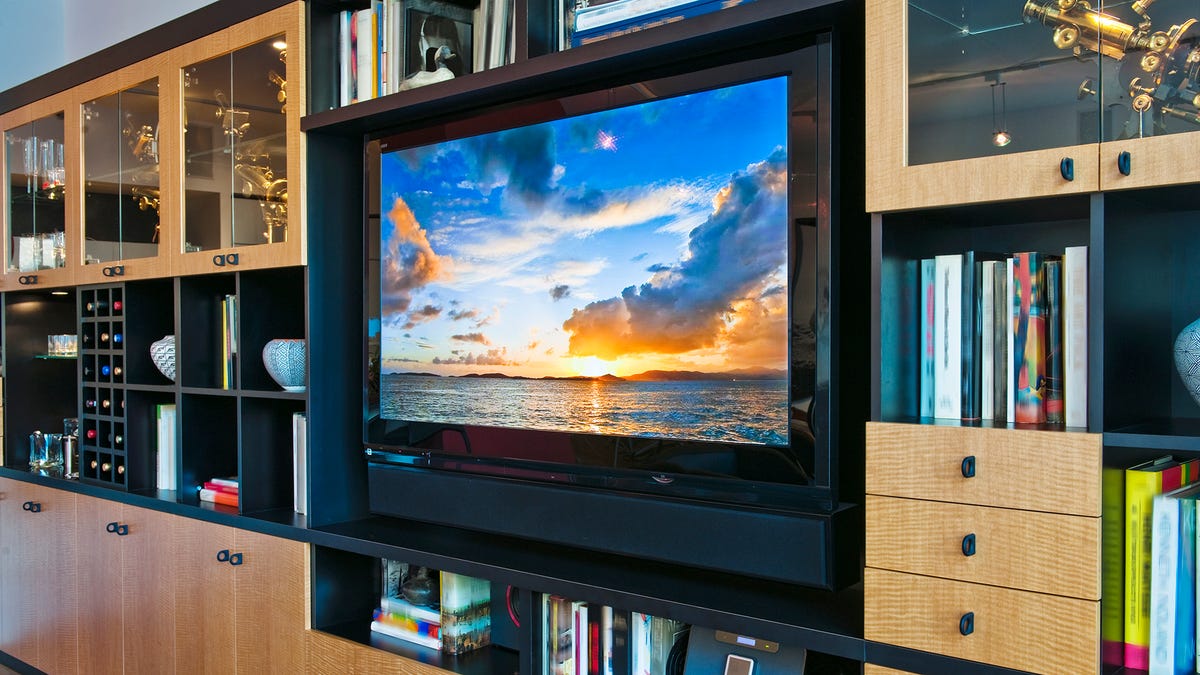
Though clean looking, a bookshelf or other cabinet can reduce sound quality and limit the size of a TV you can get in the future.
Don’t feel limited by a cabinet, bookcase or entertainment center
If you have a cabinet, bookcase or entertainment center where your TV has always been, it’s worth considering losing it. That’s a big ask, especially for a new TV, but consider two things. First, it not only limits the size of the TV you can get, but the quality. If your cabinet can only fit a 42-inch TV, know that the better TV tech like local dimming, OLED and Mini-LED are almost exclusively available in larger sizes. If they can be found in smaller sizes, there are usually only one or two models. Second, depending where the TV’s speakers are located, a cabinet could severely reduce the TV’s sound quality and volume. (If you have a 5.1-speaker system or soundbar, this won’t be an issue.)
Don’t put your indoor TV outside
Don’t mount a “regular” TV outside. There are TVs made for just that. Or, if you don’t want to spend the money on a TV designed for outdoors, just know that any TV you leave out there isn’t likely to last long (even if it’s under an awning). Best to bring it in when you’re not using it.
Don’t feel you need a ‘real’ TV
For kitchens and bathrooms, a smart display like a Google Nest Hub or Amazon Echo Show might get you everything you need without the size and hassle of a full-size TV.
Don’t sit too far away from your TV
However, you can get a larger TV to compensate. At 10 feet away, you could get the largest TV on the market and still not see pixels.
Don’t put your TV at a weird angle
If you have to turn your head to see the screen, it’s just going to lead to sore necks. Twisting your head a bit may not seem like a big deal, but keeping it that way for hours at a time can be a pain — literally.
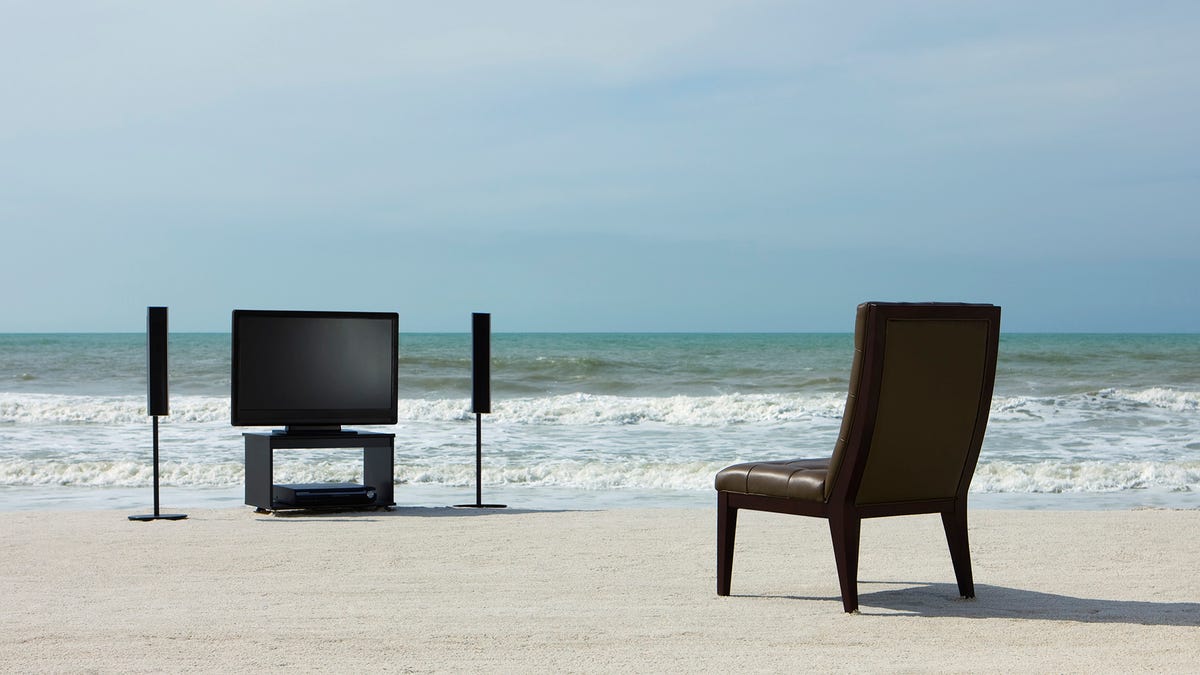
I’d recommend a subwoofer.
Bottom line
Let’s take two rooms as examples. First room: You have a great TV, mounted high on a wall near the corner, with the sofa and adjacent lamps, on the other side of the room in the other corner. These poor folks have a small-seeming TV, lots of reflections, and stiff necks from turning and looking up at the TV. Second room: The TV is mounted at eye level, the sofa is 8 to 9 feet away and there are no lamps to reflect on the screen. In which room would you want to watch a marathon of Andor?
Proper placement can determine a significant portion of the overall enjoyment of a new TV. It’s worth considering adjusting your room to be more conducive to comfortable TV viewing. Not only will you gain potential picture and comfort improvements, but in the process, you might free up more space for other things. Like a rug that really ties the room together.
Once you’ve got the placement figured out, here’s how to set up your new TV. If you’ve already got it set up, here are some important picture quality settings to adjust, including turning down the sharpness control. If you’re having trouble hearing dialogue, there are some settings you can adjust that might help.
As well as covering TV and other display tech, Geoff does photo tours of cool museums and locations around the world, including nuclear submarines, massive aircraft carriers, medieval castles, epic 10,000 mile road trips, and more. Check out Tech Treks for all his tours and adventures.
He wrote a bestselling sci-fi novel about city-size submarines, along with a sequel. You can follow his adventures on Instagram and his YouTube channel.


